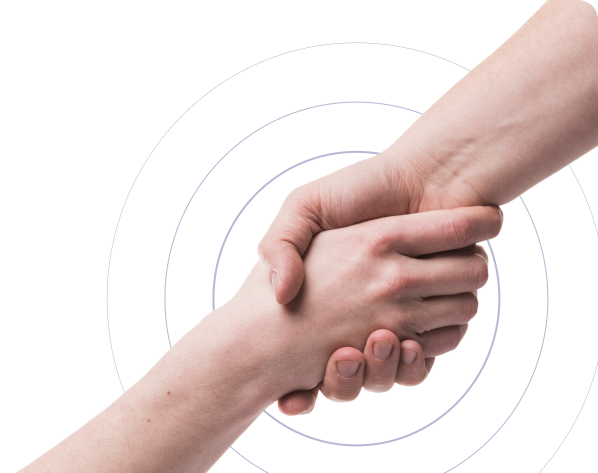
Living with bipolar disorder is already a difficult journey for many. However, when it comes along with addiction, the path may seem impossible to navigate. If you or a loved one is struggling with bipolar disorder and alcohol or drug use, knowing more about the close relationship between bipolar disorder and addiction is an essential step toward healing.
Skip To
Table of Contents
What Is Bipolar Disorder?
Bipolar disorder is a mental health issue that includes intense mood imbalances, i.e., mood swings. These attacks may have very adverse consequences on a person’s energy, behavior, judgment, and capacity to continue with day-to-day life.
Common Symptoms of Bipolar Disorder
- Sudden changes in mood or energy
- Risky or impulsive behaviors
- Periods of feeling invincible followed by intense sadness
- Sleep disturbances
- Racing thoughts or inability to focus
The Dangerous Link Between Bipolar and Addiction
The development of a substance use disorder by people with bipolar disorder is not uncommon. The co-occurring condition is often referred to as a dual diagnosis.
Why does this happen? Individuals with bipolar disorder might turn to drug or alcohol abuse as a way of dealing with their conditions. Substances may increase risky behavior during manic phases, and can be viewed as an escape during periods of depression. This self-medication, however, aggravates both mental health conditions as time goes by.
How Addiction Worsens Bipolar Symptoms
- Increases mood instability
- Interferes with medications and treatment
- Triggers more frequent or severe episodes
- Raises the risk of hospitalization or self-harm
End the Emotional Pain. Get Your Life Back.
Feeling Depressed, Anxious or Struggling with Mental Health Illness? Get Safe Comfortable Mental Health Dual Diagnosis High-Quality Therapy From Counselors That Care. Begin Your Recovery Now.
Hotline: (509) 348-4077

Bipolar Disorder and Addiction: A Complex Relationship
In case of a combination of bipolar disorder and addiction, one disorder can worsen the other. Substance use can trigger either manic or depressive episodes, depending on the person and situation. The flip side is that strong emotions that result from bipolar swings can feed cravings and addictions.
Substances commonly abused by individuals with bipolar disorder:
- Alcohol (leading to bipolar alcohol addiction)
- Cocaine or amphetamines
- Marijuana
- Prescription drugs (especially sedatives or stimulants)
Bipolar and alcohol use often go hand in hand. Alcohol is a depressant, and this fact may aggravate depressive cycles and complicate stabilizing moods.
Shopping Addiction with Bipolar and BPD
Impulsive behavior is a hallmark of bipolar mania. This may occur as shopping addiction, particularly in people with bipolar disorder or borderline personality disorder (BPD). Although frequently treated as less severe, excessive shopping can result in economic disaster, anxiety, relationship issues, and aggravation of mental illness symptoms.
When it is coupled with substance use, this forms a cycle of harmful coping mechanisms that may seem impossible to get out of without help.
Why Treatment Must Address Both Disorders Together
An integrated approach is necessary to successfully overcome bipolar disorder and addiction. Without treating both, one usually results in relapse or insufficient recovery. A dual diagnosis program enables patients to stabilize their mood and leave substance dependence simultaneously.
Effective treatment includes the following.
- Medication management: Mood stabilizers, antipsychotics, or antidepressants
- Therapy: Cognitive Behavioral Therapy (CBT), Dialectical Behavior Therapy (DBT)
- Psychoeducation: Teaching people and families the skills to cope with bipolar disorder
- Relapse prevention planning
- Support groups and aftercare
Get Help. Get Better. Get Your Life Back.
Searching for Accredited Dual Diagnosis Mental Health Centers Near You?
Even if therapy failed previously, or are in the middle of a difficult crisis, we stand ready to support you. Our trusted behavioral health specialists will not give up on you. When you feel ready or just want someone to speak to about counseling alternatives to change your life call us. Even if we cannot assist you, we will lead you to wherever you can get support. There is no obligation. Call our hotline today.
FREE 24/7 Dual Diagnosis Mental Health Services HotlineFinding the Right Support: What to Look For
When seeking assistance, opt to find a program that has experience in treating mental health as well as addiction. You’ll want a caring staff that knows the ins and outs of bipolar and substance abuse disorders and develops custom treatment plans.
We Level Up Washington offers a special approach that treats those with bipolar and addiction. We provide evidence-based treatment to those in the Spokane Valley area and the surrounding metro and beyond, accompanying our clients through every step.

How to Cope with Bipolar and Addiction
It should be understood that recovery is possible. A large number of people successfully recover, moving on to lead full, happy lives. Some ways to deal with bipolar and addiction include the following options.
1. Seek Professional Help
Early treatment by a mental health professional is critical. If you suspect both conditions are present, don’t wait. Integrated care can significantly improve outcomes.
2. Establish a Routine
Structure helps regulate mood and reduce chaos. Mental and emotional stability are best aided by a consistent pattern of sleeping, eating, and exercising.
3. Learn Triggers and Warning Signs
You may figure out what provokes your episodes or substance use cravings and then learn to answer them in different ways. This might include avoiding certain people, situations, or stressors.
4. Practice Relaxation Techniques
Some of the tools that would help one to de-stress and overcome the feelings of overwhelming emotions include deep breathing exercises, meditation, journaling, or yoga.
5. Build a Support System
Be with individuals who know and can encourage your recovery. This can comprise friends, family members, or support groups that are dual diagnosis-based.
Comfortable Facilities & Amenities
High-Quality Mental Health Services & Behaviroal Health Substance Abuse Treatment
Rehab Centers TourRenowned Mental Health Centers. Serene Private Facilities. Inpatient Rehab Programs Vary.
Mental Health Helpline: (509) 348-4077Proven recovery success experience, backed by a Team w/ History of:
15+
Years of Unified Experience
100s
5-Star Reviews Across Our Centers
10K
Recovery Success Stories Across Our Network
- Low Patient to Therapist Ratio
- Comprehensive Dual-Diagnosis Treatment
- Complimentary Family & Alumni Programs
- Coaching, Recovery & Development Events
- Comfortable Onsite Medical Detox Center
The Science Behind Bipolar and Substance Use
It has been indicated in research that individuals who have bipolar disorder are much more susceptible to substance problems. Both conditions influence the brain’s reward system, mood regulation areas, and the ability to respond to fight or flight. The release of stress hormones in the manic or depressive episodes caused by the body can generate strong drives to take substances to feel better.
Chronic drug use or alcohol use may also hurt the digestive system and exacerbate conditions of nausea and vomiting, along with causing physical discomfort that is added to emotional issues.

Frequently Asked Questions (FAQs)
-
In which part of Spokane Valley, Washington can you treat bipolar and addiction?
At We Level Up Washington, we offer caring bipolar and addiction treatment. In our dual diagnosis program, individuals can treat both conditions within a single approach, ensuring a lasting recovery.
-
Where can you get bipolar and addiction help in Liberty Lake, Washington?
Patients residing in the Liberty Lake area may be eligible for our dual diagnosis programs at Up Level Up Washington, located in the Spokane Valley. We offer individualized care, therapy, and aftercare support.
-
In what location close to Post Falls, Idaho can one be treated for bipolar and addiction?
Residents of Post Falls have a short drive to reach expert mental health and addiction services available at We Level Up Washington, where co-occurring disorders such as bipolar and addiction are managed with exceptional compassion and expertise.
Take the First Step Toward Recovery
You are not alone if you have both bipolar and addiction issues. Many people have already walked this path and successfully healed. With the appropriate treatment, you will become stable, develop healthier routines, and regain control of your life.
We Level Up Washington is well-versed in dual diagnosis care. We want to be with you every step of the way and offer highly personalized plans, genuine support, and a genuine commitment to your well-being.
Give us a call today to learn more or speak with one of our compassionate staff members, who will guide you through the next step.
World-class, Accredited, 5-Star Reviewed, Effective Mental Health Dual Diagnosis Programs. Complete Integrated Inpatient Rehab with Free Post Discharge Therapy Planning.
Hotline: (509) 348-4077End the Emotional Pain Rollercoaster. Gain Stability & Happiness Through Recovery Treatment. Start Mental Health Counseling Today. Get Free No-obligation Guidance by Behaviroal Health Specialists Who Understand Mental Health Recovery.
Summary
Call today to speak with our team and learn more about our programs. We Level Up Washington: (509) 348-4077. Your next step starts here.